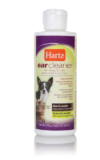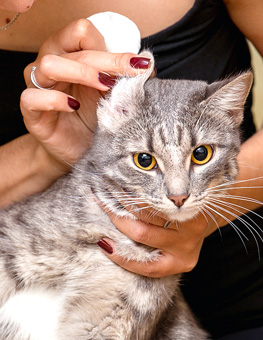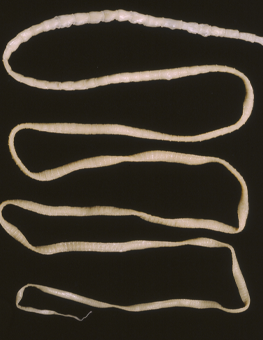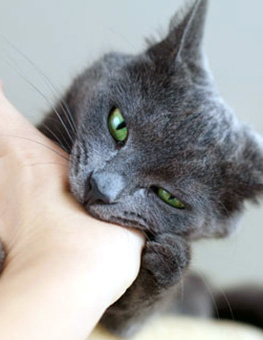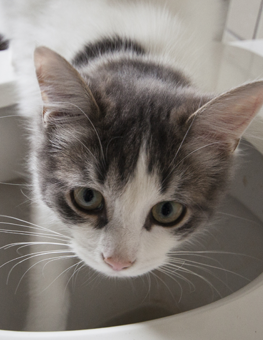How to Clean and Treat Ear Mites in Cats
Ear mites are the most common cause of ear infections in cats.

Other than physical discomfort, ear mites can cause problems such as infection or hearing loss.
These microscopic, white parasites live on the surface ear canal, but sometimes can migrate to other parts of the body like the head and neck. Otodectes cynotic is the common cat ear mite.
Ear mites feed off dirt, wax and tissue fluid in your feline’s ears. Beyond the obvious physical discomfort to your pet, untreated ear mite infestations can cause ear inflammation, bacterial and fungal infections. Severe cases can lead to hearing loss or ear damage from scratching, so prompt treatment is important.
Symptoms of Ear Mites in Cats
- Depending on the severity of the infection, frequent scratching and head shaking are two common signs that your cat may be infected with ear mites. Some cats are more bothered by these parasites more than others.
- Ear mites also stimulate the wax producing glands inside the ear canal. The result is a black, crusty build-up in the ears that resembles coffee grounds. This discharge is made of blood, wax, debris, and mites themselves. In some cases, this crust can thicken enough to block the ear canal.
- If you think your cat is infected with ear mites, then your vet can easily diagnose the problem using a magnifying otoscope. Your vet will be able to see them moving about in the ear or on a slide. A professional diagnosis is also a good idea, since ear mites are not the only cause of feline ear infections.
Treatment: How to Clean Ear Mites in Cats
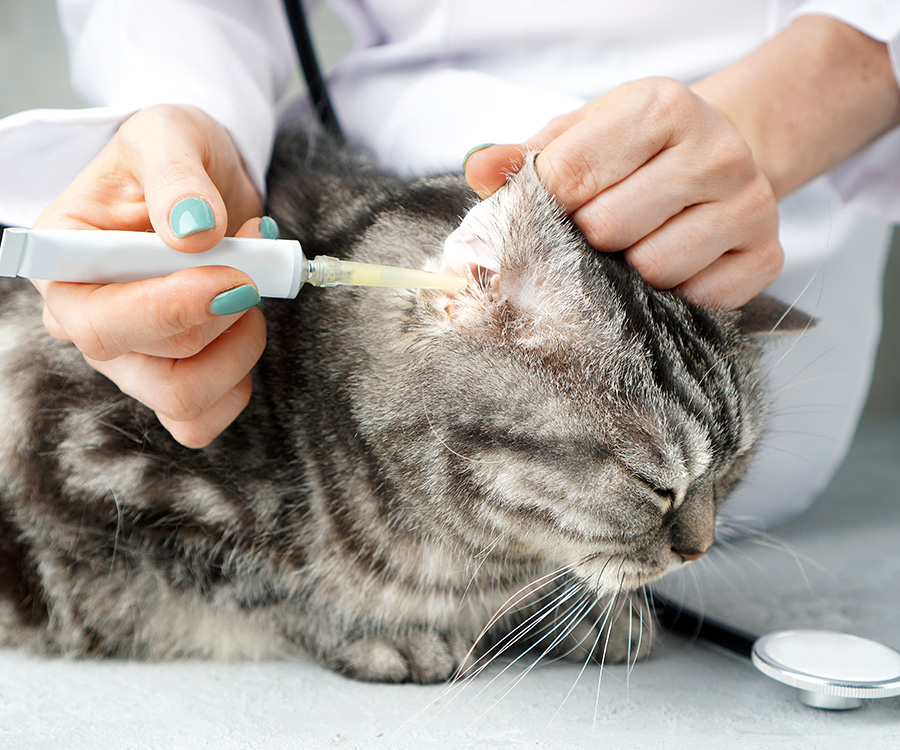
Your vet can do an initial cleanse and apply medication if needed to kill remaining ear mites.
Cleanse
The black, waxy ear build-up and dirt must be thoroughly flushed and cleaned from the ear canal before any medication can be applied. We strongly encourage pet owners to have their vet do the initial cleanse to ensure all the debris is removed and to avoid damaging your cat’s delicate ear drum.
Medicate
Once the ear is properly flushed, your vet may apply a medication to kill the remaining parasites, reduce inflammation and prevent infection. To treat a cat's ear mites, usually topical drops are used that contain a pyrethrin insecticide and delivery agent such as mineral oil. Your vet may choose a topical treatment instead. Be sure to discuss treatment options with your vet.
Repeat the Ear Mite Treatment on Your Cat at Home
- Wait one week after your vet visit.
- Clean your cat's ears again and apply medication as directed by your vet or follow label instructions.
- Wait one more week, then repeat step 1.
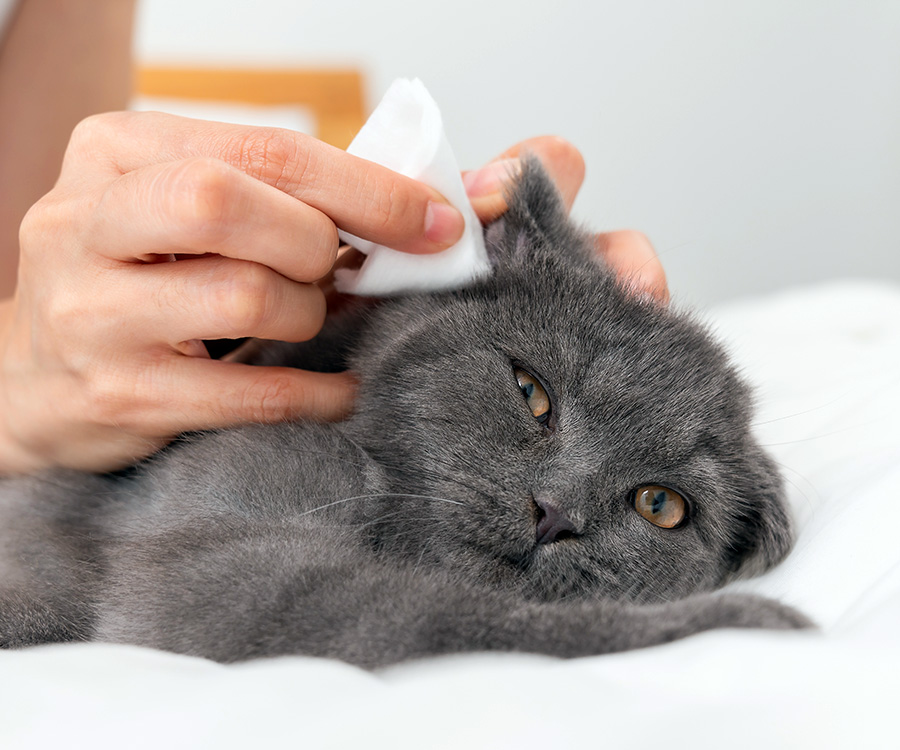
Repeat the steps at home, using a cat ear cleanser like that from Hartz and apply medication.
Make sure you provide your cat the full course of treatment even if symptoms appear to go away. Ear mites live out their entire four-stage, 3-week lifecycle on their host. Following this treatment protocol will interrupt the entire life-cycle and keep developing mites from reaching adulthood.
Hair and Environment
Although humans are not affected, ear mites in cats are highly contagious and can easily pass from one animal to another regardless of species, for example cat to dog.
Other household pets can become infested, too, including gerbils, hamsters, guinea pigs, mice, ferrets, etc. And females can easily pass ear mites to their offspring. For this reason, in addition to cleaning ear mites in your cat, it’s important to treat all pets in the household simultaneously or they will keep re-infecting each other.




